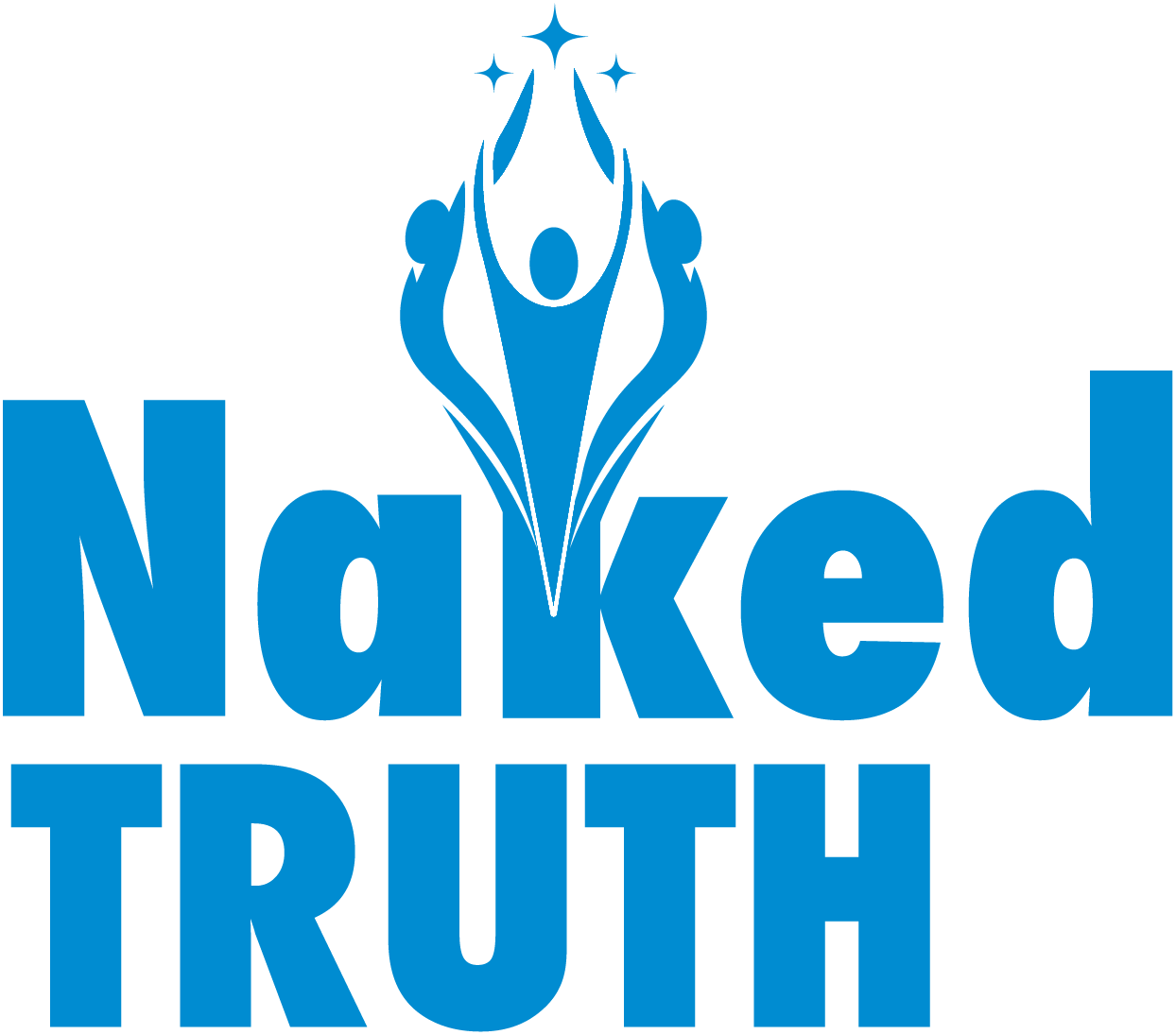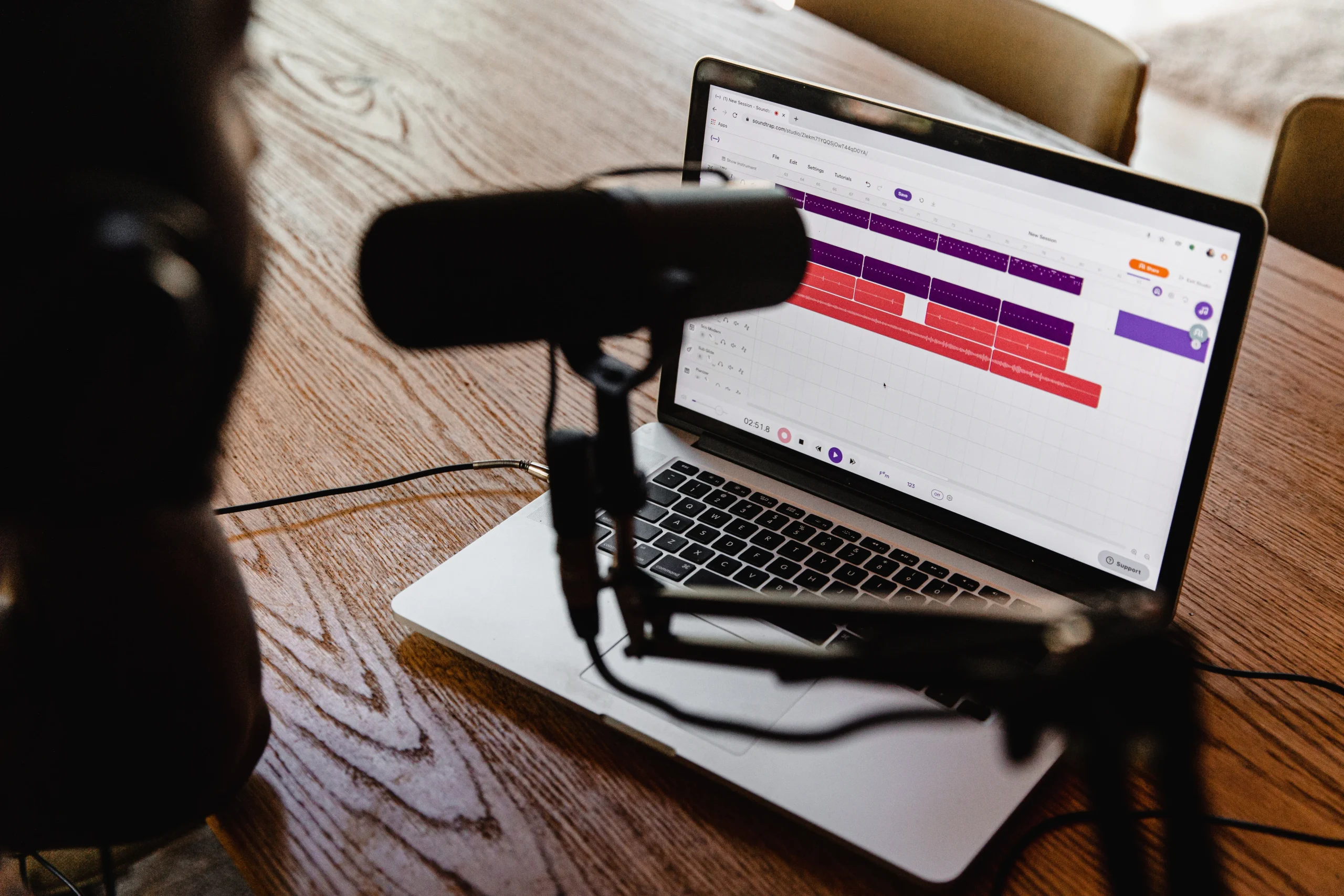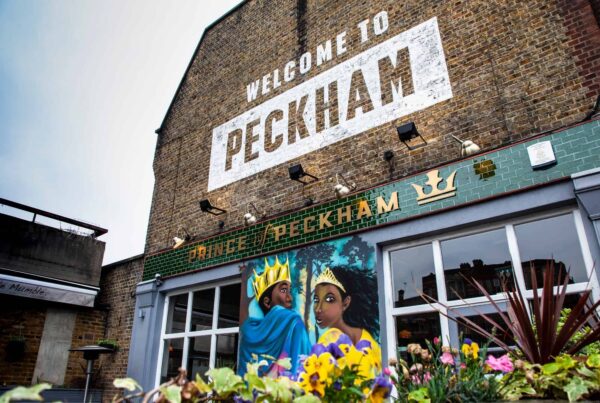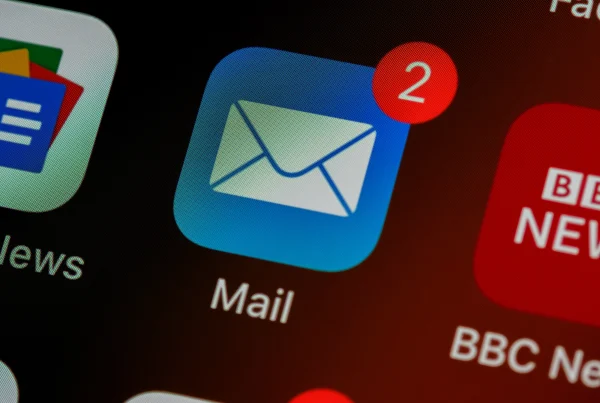In 2021, there were more than 19.1 million podcast listeners in the UK. By 2026, it’s estimated that there will be 28 million listeners. With the number of podcasts and podcast listeners growing rapidly each year, there has never been a better time to start a podcast.
Many organisations are now considering making podcasting part of their content marketing and PR strategies. Organisations may use a podcast to reach new audiences, establish their spokespeople as thought leaders in a particular field, and spread their mission.
However, creating, editing, and promoting a podcast is no small task — that’s why we’ve put together this helpful step-by-step guide to mastering the art of podcasting. With some essential tips for standing out from the crowd and growing your audience included at the end of this guide, here is everything you need to know before you start a podcast.
Step 1: Planning your podcast
A lot of planning is required before you start a podcast. There’s no use jumping straight into recording the first episode if you don’t have a plan to follow it up. Like any other PR or marketing campaign, you need a good strategy and goals in place before you reach for the microphone.
Think about why you want to start a podcast
The first step in planning a new podcast is to think about the purpose behind it. Your reason for starting a podcast might be:
- To bring awareness to a particular topic or social cause
- To reach new audiences to promote your organisation or mission
- To build a community of like-minded listeners and followers
- To establish your organisation’s key people as thought leaders and authorities in their field
… or any combination of the above. Analysing your reasons for wanting to start a podcast will help you set goals and create an effective strategy; it’s an essential step in your journey as a podcaster.
Figure out what will make your podcast unique
According to podcast database Listen Notes, there are at least 2,894,487 podcasts in the world and 139,489,847 episodes.
With such a high volume of podcasts already available on Spotify, Apple Podcasts, and other platforms, you need to think: what will make my podcast unique?
Perhaps it’s unique because it discusses a taboo topic that other podcasts shy away from; maybe it’s an innovative format that keeps each new episode interesting; or perhaps it’s a totally fresh take on a familiar topic.
Whatever you decide is the USP (unique selling point) of your podcast, make sure that it’s broad enough to sustain across the course of multiple episodes. There’s nothing worse than a great podcast concept that runs out of steam too quickly!
Consider your audience
Next, ask: who is your podcast for? You don’t need an existing audience when you start a podcast, but it definitely helps to have some idea of who you are aiming the production at. Think about demographic factors such as:
- Age
- Geographical location
- Occupation
- Gender
- Language
- Family status
Once you’ve identified your target audience, you’ll have a better idea of what sort of content to include, the tone of your podcast, and how to market it.
With 74% of listeners tuning in to podcasts to learn new things, podcasts with an educational or informative aspect are a popular choice. Think about what kinds of things your listeners might want to learn more about and this will help you plan your episodes.
Name your podcast
Perhaps you’ve had a name in mind for your podcast for a long time; maybe you’re still not sure what to name it. Either way, here’s a checklist for finding the perfect name for your new podcast:
- Keep it snappy: 3 to 4 words is ideal
- Be punny: a pun or humorous podcast title sticks in your listeners’ minds better than a boring one
- …But don’t overcomplicate it: don’t force a pun if it’s only going to confuse listeners or make it harder to search for your podcast
- Avoid tongue twisters: you’re going to have to say the podcast name out loud a lot, so don’t make it awkward to say
- Don’t include ‘podcast’: don’t waste space including the word ‘podcast’ in your title
- Keep it relevant: most importantly, the name has to reflect the content of your podcast
Write a podcast description
The podcast name and description go hand in hand; write an engaging and intriguing podcast description that will convince people to click ‘Play’. State your podcast’s topic, format, and how frequently you release new content, and explain why the podcast is relevant to a potential listener.
Don’t forget that search engines struggle with searching audio so you need to put all the important keywords in your title and description. This will help potential listeners find you more easily.
Tip: keep the description short — Apple Podcasts has a 4000 character limit, for example, so you need to convey all the information in this limited space.
Decide on an episode length
20-45 minutes tends to be the recommended length — people like tuning in to a podcast on their commute so this is a good run time. Keeping episodes to a consistent length is a good idea, but this doesn’t have to be a hard and fast rule.
Don’t forget that for 45 minutes of good quality podcast content, you’ll likely need to record for significantly longer. If this seems difficult, we recommend planning for a shorter episode length.
Decide how frequently to release episodes
With podcasting, consistency is key. You’ll want to release episodes on the same day of the week and at the same time so your audience can build listening habits.
The frequency of your episodes, however, is entirely up to you. If you’re producing a podcast in addition to your day-to-day responsibilities in your job, it’s unlikely that you’ll be able to release an episode as frequently as once a week. Once a fortnight or once a month may be more achievable.
The other thing to consider is the possibility of creating podcast seasons. These are short periods of time where you produce podcasts more frequently, then take a break. Seasons may revolve around a particular theme or aspect of your subject matter.
Chose a podcast format
Are you envisioning an interview-style series where the podcast host talks to key figures in an industry or niche? A monologue, panel, or conversational co-hosted podcast? Consider the podcast format you want to use and plan the episodes accordingly.
Plan the content and people involved in each episode
Now, you’ll need to plan the podcast episodes on a really granular level. What will the title and subject of each episode be? Who will be involved? Does every podcast episode feature the same people, or will there be changing guests or co-hosts?
At this point in the planning process, you’ll need to plan out the content of each episode. Some podcasters like to write a detailed script with all the information they’ll cover, while others prefer to write a few key bullet points or interview questions to keep the podcast tightly focused. Try not to just read your notes word-for-word; keep it conversational and spontaneous as much as possible.
Step 2: Recording your podcast
Once your podcast is planned, it’s finally time to start the fun stuff: recording.
Source your recording equipment
When making a podcast, sound quality matters. No amount of time spent in post-production can make shoddy audio sound amazing, so you really can’t skimp out on audio equipment.
For your podcast equipment, you have two options. Firstly, you can buy the microphones you need. There are decent affordable microphone setups that you can buy without breaking the bank, often with USB connections or small mic stands. The benefit of buying your own podcast microphone is that you can use it when and where you want, making it easy to continue creating podcast episodes in the future.
The second option is to rent equipment. You can rent podcasting studios in most cities for fairly low prices. These give you access to premium podcasting microphones that will provide incredible sound. However, the downside is that this costs more money and is reliant on studio availability.
Choose a recording and editing software
You’ll need some software to record and edit the audio. Audacity is a free editing software with great functionality, while Adobe Audition is a great paid option. Mac users may also choose to use GarageBand. It’s worth spending some time watching tutorials and learning how to use these before you start trying to record. A trial run of your first episode will also help you get to grips with the recording and editing before doing the real thing.
Do your recording session
Now, it’s finally time to record your podcast. Do some vocal warmups to help with your speech, make sure you’re in a quiet place, and keep still to avoid creating distracting background noises. Don’t forget to wear headphones to prevent a lot of unnecessary audio feedback.
When presenting your podcast, remember that you’re not just rambling into a mic; you’re talking directly to your audience. Podcast hosts doing monologue shows need to be engaging — vary your tone, ask rhetorical questions, and stay on topic to keep your listeners engaged. Interview formats or conversational episodes are easier to pull off, especially if the co-hosts have good chemistry.
Step 3: Editing your podcast
Edit your podcast
Once the podcast is recorded, it’s time to start editing the audio files. This includes cutting out unnecessary parts, shuffling around the order, and tidying up volume levels and sound quality. It may also involve adding your intro and outro.
Add music or sound effects
To add more flavour to your podcast, you may choose to add music or sound effects. These might be royalty-free resources you find through the BBC sound effects library or another royalty-free source, or they might be original content that you create yourself.
Podcast music can be a great way to add drama or atmosphere to your podcast, but use it sparingly. Tip: try not to leave music playing with no talking for more than ten seconds — your listeners will get bored and switch to a different podcast.
Step 4: Sharing and promoting your podcast
Then, once the editing is finished, it’s time for you to publish and promote the podcast.
Choose some eye-catching cover art
The cover art for your podcast will help grab potential listeners’ attention, so make this attractive and eye-catching. You could design the art yourself or pay a graphic designer on a freelancing site like Fiverr. Keep in mind that the cover art will be very small so any tiny details or small text will be difficult to see.
Use a podcasting hosting account
When publishing a podcast, you can’t upload the audio files directly to Spotify or Apple Podcasts. Instead, you’ll need to create a podcasting hosting account, also called a media host or podcast host. There’s a wide variety of podcast hosts with paid or free plans: Podbean, Buzzsprout, Soundcloud, and RSS.com are just a few of the most popular ones.
Once the podcast is uploaded to your media host, you can submit it to different podcast directories such as Spotify, Google Podcasts, or Apple Podcasts. It might take a few hours for your show to appear on the podcast directories.
How to get your podcast on Spotify
- Check that your podcast meets Spotify’s requirements in terms of formatting
- Log in to Spotify for Podcasters and agree to the terms and conditions
- Enter the link to your podcast’s RSS feed (available on your podcast hosting service)
- Spotify will send a verification code to the email address associated with your RSS feed and podcast host; verify the podcast
- Enter details such as language and category
- Press ‘Submit’
After doing this, your podcast should appear on Spotify after a few hours!
Add the podcast to your website
You’ll also want to upload the podcast to your website so it can be found that way. It’s easy to embed the podcast player on your website by copying the link to the RSS feed onto your site. This way, new episodes can appear on your site as soon as you upload them to your host.
Create some hype
Promoting your podcast is the next step. Share it with your existing audience on social media sites like LinkedIn and Twitter, include it in your email newsletter, and encourage any of your guests to share it too. Ask your listeners to share, subscribe, and review your episodes with compelling CTAs at the start and end of each podcast episode. Also, don’t forget to network with other podcasters to cross-promote!
What are the biggest challenges involved in podcasting, and how can I overcome them?
Podcasting challenge: Building an audience
One of the biggest challenges associated with creating a podcast is building your audience. Research has found that 41% of podcast listeners find new podcasts through online sources like blogs and articles, while 24% are found through friends’ recommendations and only 16% are found within a podcast app.
To find the right listeners, a podcast promotion strategy is key.
Promote your podcast on social media
Social media is a great place to advertise your podcast. Turn clips from your podcasts into videos for your feed and use powerful calls-to-action to encourage people to check out the full episode.
Invite guests onto your podcasts
Bringing guests onto your podcast is a great way to extend your reach. A podcast guest will also carry out promotion for the podcast, helping you reach a whole new group of potential listeners.
Repurpose podcast content into blog posts
Great for giving people a preview of your podcast and for boosting your SEO, turning episodes or sections of your podcast into blog posts for your website is a great way to reach a larger audience. You may choose to use a blog post to transcribe the conversation or to add more information or bonus content — just make sure it has a strong CTA that encourages people to check out the full podcast.
Podcasting challenge: Standing out
With literally millions of other successful shows already on podcast directories, one major challenge that new podcasters face is: how do I make my podcast stand out?
It’s a valid question: the podcast market is so saturated that it often feels like every single podcast name and topic is already taken. However, it’s certainly not impossible to start a podcast that stands out from the crowd.
Do something different
To stand out from the crowd, you need to make sure your podcast is truly unique. Does it tackle themes that other podcasters shy away from? Highlight rare expertise? Or simply explore topics that nobody else has covered yet?
For example, when we started Naked Truth Radio, we became the first social cause radio station in the UK. Committing to discussing taboo topics without a filter, we decided that tackling difficult themes with authenticity would be the key feature of our show.
Or bring a fresh perspective to a common topic
However, you don’t need a completely unique topic for your podcast; you just need a new and fresh perspective on that topic and a little bit of charisma with which to present it.
Ask for feedback
Another way to ensure that your podcast stands out from the crowd is to listen to your audience feedback. What do they like about the podcast? What could be improved? How does it compare to similar podcasts? Asking listeners these questions can help you identify ways to make your podcast stand out more.
Consider making a video podcast
Who said that podcasts have to be audio only? Video podcasts are now on the rise with platforms such as Spotify supporting video as well as audio episodes. Because this format is still relatively unusual, adding video to your podcast is a good way to get noticed.
Podcasting challenge: Running out of ideas
Another challenge that every podcast creator encounters at some point is running out of ideas. Depending on how specific your podcast’s subject is, this may happen sooner or later, so it’s important to take steps from the beginning to counter this.
Keep an ideas spreadsheet
A spreadsheet full of potential episode ideas that you can tick off as you complete them is a great way to keep the good ideas flowing. Add notes to the spreadsheet whenever you have an idea for an episode or segment. Moreover, it might be worth connecting this ideas spreadsheet with the rest of your content strategy — perhaps a blog post or social media marketing campaign can inspire a great podcast episode idea!
Listen to other podcasts
One of our best tips to keep having new ideas is to take inspiration from other podcasts. Listening to a lot of podcasts in different genres helps you become more creative in your own podcast. For example, you might notice a podcast using a particular format or talking about a specific topic that you might want to explore.
Engage with your listeners
Sometimes, great episode ideas can come from your listeners themselves. Building a community of listeners on social media allows you to interact with followers and find out what they want to hear next on your podcast.
Conclusion
With all these tips in mind, you’re now ready to start your first podcast! It’s time to start producing your episodes and sharing them with the world.
Need help with production or PR strategy? Naked Truth is a PR agency that supports individuals and organisations who are making a difference in the world.
To find out more about how we can amplify your voice and increase your social impact, get in touch today.





